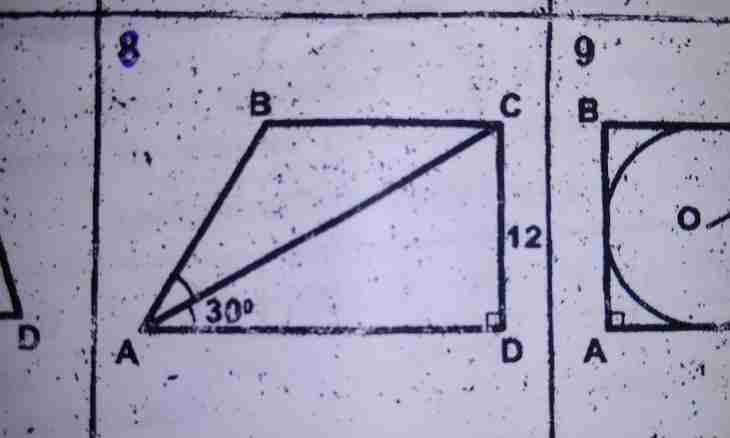The trapeze is a quadrangle at which two of four parties are parallel among themselves. Trapezes are isosceles (to equal sides) and rectangular (at which one of four corners is equal to 90 degrees). The area of a trapeze pays off very simply.
Instruction
1. Let's say in a trapeze lengths of the parallel parties (an and b, respectively), as well as length of its height of h are known, it is possible to calculate the area of a trapeze, having applied the following formula: S = ((a+b) of *h) / 2 Example: length of the basis and the party of a trapeze opposite to it is equal to 28 and 22 cm respectively. Height of this trapeze 30 smdlya to find the area of this figure, it is necessary to use the formula stated above: S = ((28+22)*30)/2 = 750 cm²
2. When at a trapeze length of its average line m and its height of h are known, it becomes even simpler to find the area of a trapeze, knowing this formula: S = m*hprimer: length of the average line of a trapeze of 15 cm, its height 10 smprimeny the formula stated above, turns out: S = 15*10 = 150 cm²
3. The isosceles trapeze around which the circle which radius is equal to r is described is Let's say given, and the corner at the basis of a trapeze is equal α. In that case, the area pays off in such a way: S = (4*r²)/sinαПример: around an isosceles trapeze the circle with a radius of 20 cm is described, the corner at the basis of this trapeze is equal 45 °. Then the area is so: S = (4*15²) / sin45 °S = 1273 cm²

